As many of you know, CAMT moved most of its servers and upgraded systems over the weekend to provide a more sustainable network. We strive to offer our partner organizations nearly 100 percent uptime, and co-locating our servers so our hosted sites are accessible in the event of a power failure is a major step towards achieving that goal.
The following is my log of the day's events:
7:05 AM - Guillermo and I arrive at the CAMT offices on the campus of Carnegie Mellon. It is one of those beautiful Saturdays that are rare to Western Pennsylvania... no rain, no humidity, blue skies. You know, perfect weather for sitting inside and staring at computer screens all day.
Melody was at the office until 8:30 PM last night, and she came in at 4:30 this morning to get a head start. She looks cranky. She needs coffee.
7:30 AM - The CMU IT reps show up to move our servers. This process is complicated by the fact that Melody has to set up a router in our office and make sure the servers communicate with us once they're in their new home. Otherwise, the servers would have to be assigned new IP addresses, which would mean days or weeks of downtime for our clients.
8:00 AM - There is still no coffee. Somehow, I had expected it to magically appear, but it doesn't look as though that's going to happen.
"Gosh, in the four hours that you've been here already this morning, I would have thought you could at least get some coffee," I joke with Melody. She is not amused. I head to Starbuck's to feed the corporate monster and our caffeine addictions.
8:45 AM - Everyone's computers are able to connect to the network but mine. I complain to Melody and Guillermo that I'd really like to read celebrity gossip Web sites while I drink my coffee and eat my donut. My cries fall on deaf ears... or maybe they're just ignoring me.
9:10 AM - As is to be expected of all technology endeavors, there are a few snags. We run afoul of several of Murphy's Laws, and the servers are hiding from us. If I had a time machine, I would travel back in time and smack Murphy. Unfortunately, the building of the official CAMT time machine has been postponed until after the server move.
Melody and Guillermo are talking about Spanky, Alfalfa, Pickle and Porky. I think they've lost their minds, but it turns out that these are the nicknames for some of our servers.
9:30 AM - I still cannot connect to the Internet. Melody informs me that I am not today's top priority. I am simply flabbergasted.
10:15 AM - My computer is finally connecting to the Internet! Paris Hilton is up to no good, as usual.
11:30 AM - Guillermo is configuring DNS settings for our servers. For those who don't know, DNS is short for Domain Name Server/System/Service. DNS translates domain names into IP addresses and vice-versa. While everyone is most familiar with URLs like www.google.com and www.yahoo.com, these domain names are all associated with IP addresses, such as 198.105.232.4.
Noon - When routers attack! We experienced a brief moment of panic when the router at CAMT and the router at the new server location were refusing to communicate. I quell everyone's panic by blowing bubbles. This is the extent of my contribution thus far, but let us not downplay the importance of bubbles during a crisis.
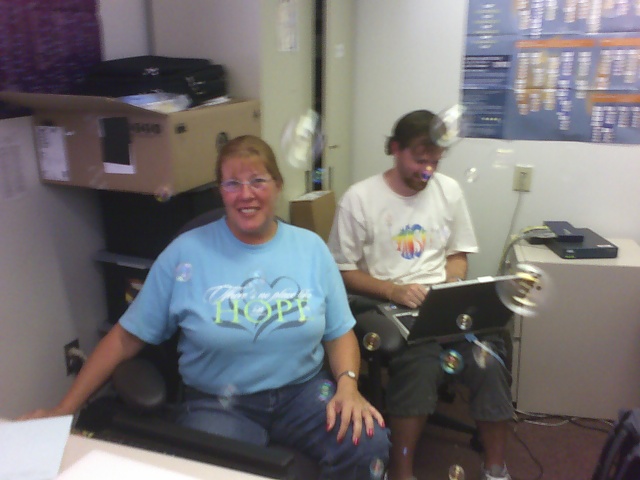 Pretty bubbles ease the stress.
Pretty bubbles ease the stress.
12:45 PM - Eureka! It seems that one tiny, miniscule setting was incorrect, and it was the root of all our problems. I blow more bubbles, but the novelty is beginning to wear off.
 Note to self: Do not blow bubbles directly into the eyes of the systems administrator.
Note to self: Do not blow bubbles directly into the eyes of the systems administrator.
Fortunately, we were able to correct the routing issue quickly, but it's often the case with technology projects that the smallest mistakes cause hours of agony.
1:20 PM - Once again, my expertise pays off in a big way; I am the only one equipped to handle the intricacies of our lunch order. Very important - Guillermo does not want mayo. If this step of the server move is botched, we could lose precious time waiting for him to scrape his bun clean.
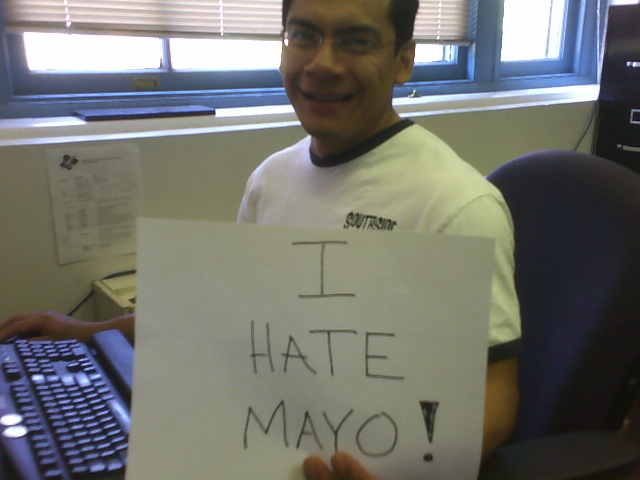 Guillermo hates mayo. Is this absolutely clear?
Guillermo hates mayo. Is this absolutely clear?
While we wait on our lunch delivery, Melody and Guillermo settle in to spend the next hour or two configuring our new routers to allow the appropriate traffic into and out of our network, while blocking unauthorized access.
2:00 PM - Uh oh! The entire Carnegie Mellon network is down because of a water leak at the institution's Internet Service provider. Unless it comes back up soon, we will have no way to test our settings and changes.
3:00 PM - Just in the nick of time, the CMU network is back up and Melody and Guillermo have finished modifying the router settings. We have started our testing of client sites, and it appears that everything is up and running.
It was a long and hectic day, but we learned a little about ourselves, a lot about each other and nothing about dinosaurs or hydrogen fuel cells.






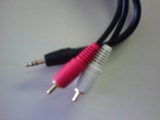
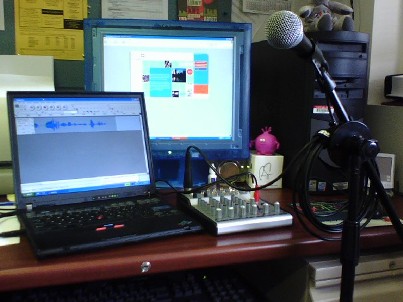
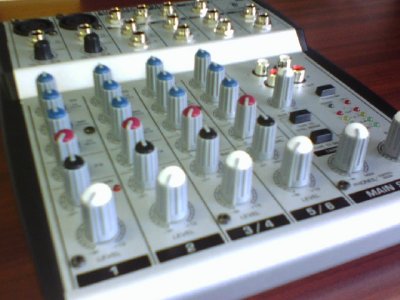
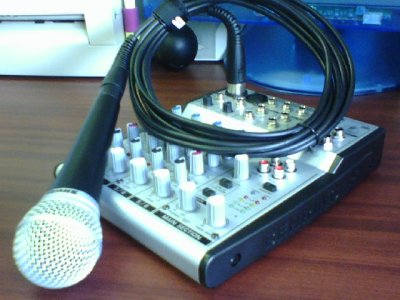
 Pretty bubbles ease the stress.
Pretty bubbles ease the stress. Note to self: Do not blow bubbles directly into the eyes of the systems administrator.
Note to self: Do not blow bubbles directly into the eyes of the systems administrator. Guillermo hates mayo. Is this absolutely clear?
Guillermo hates mayo. Is this absolutely clear?